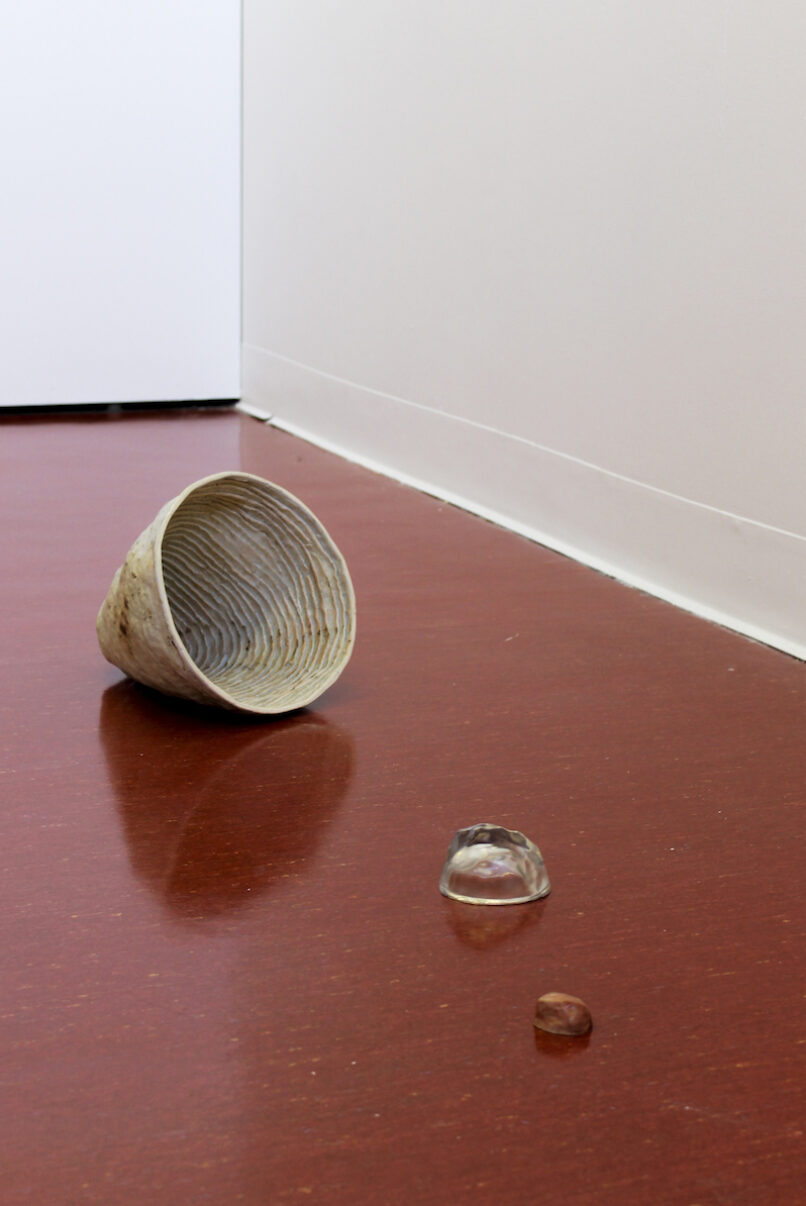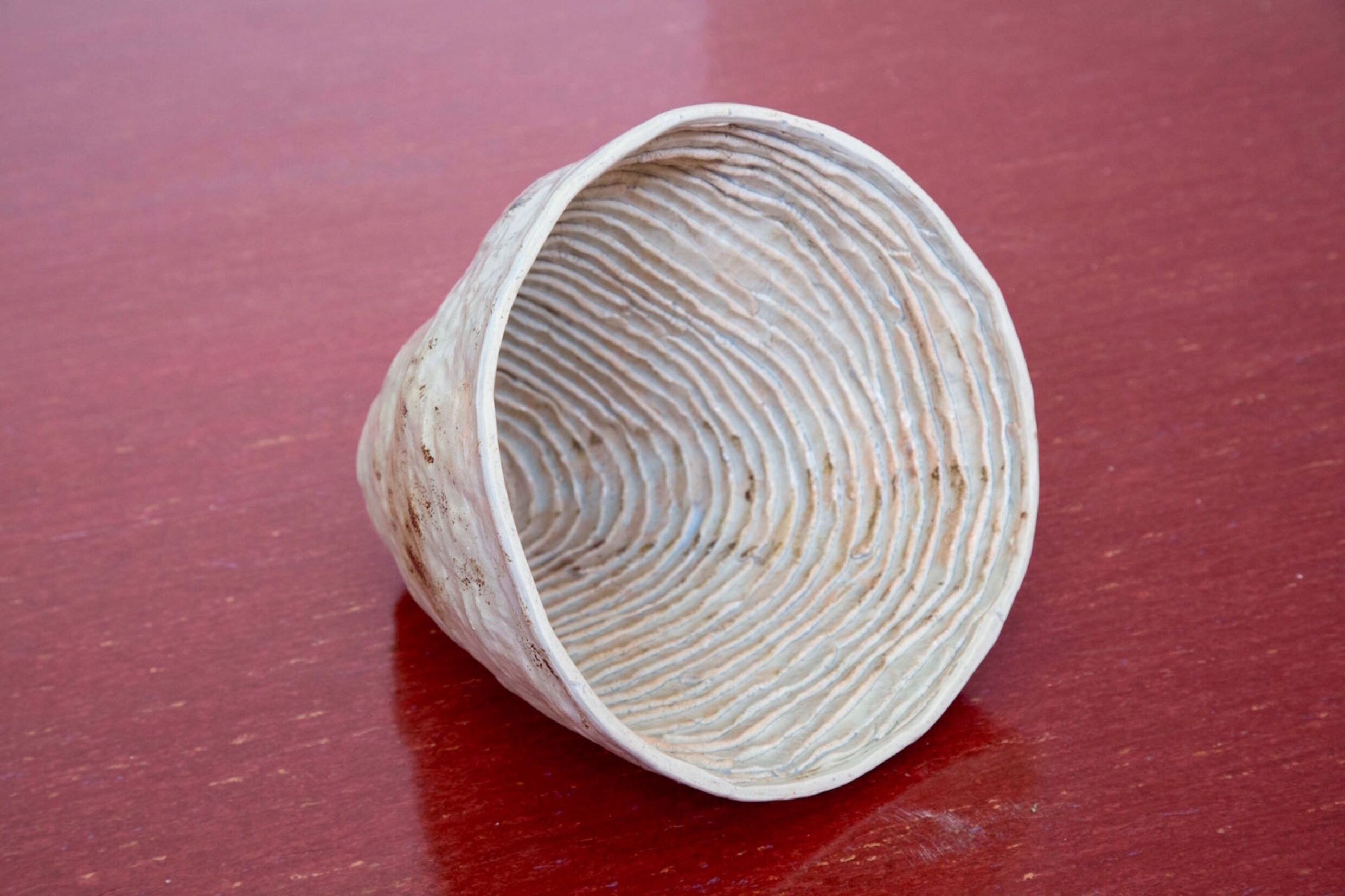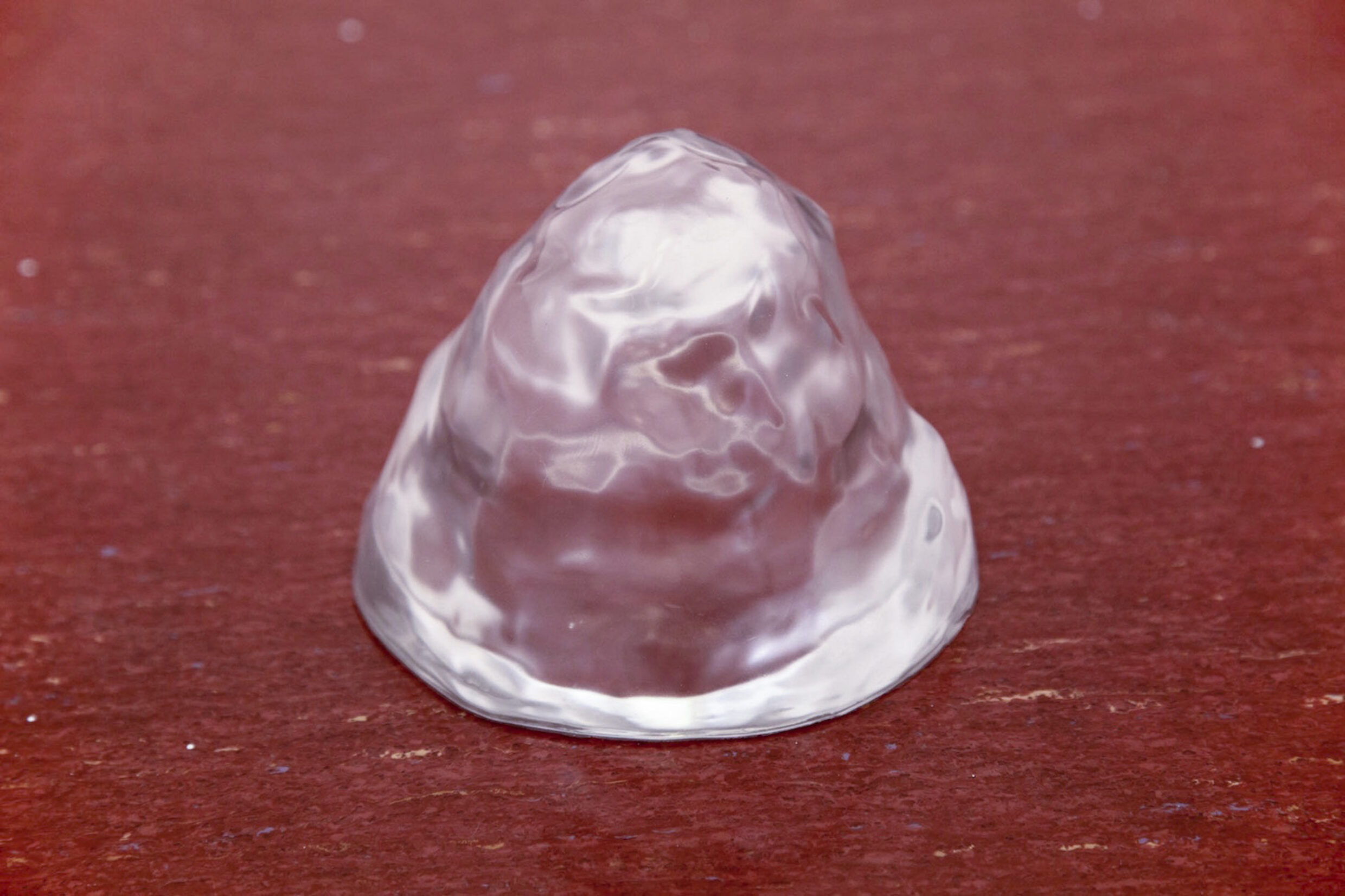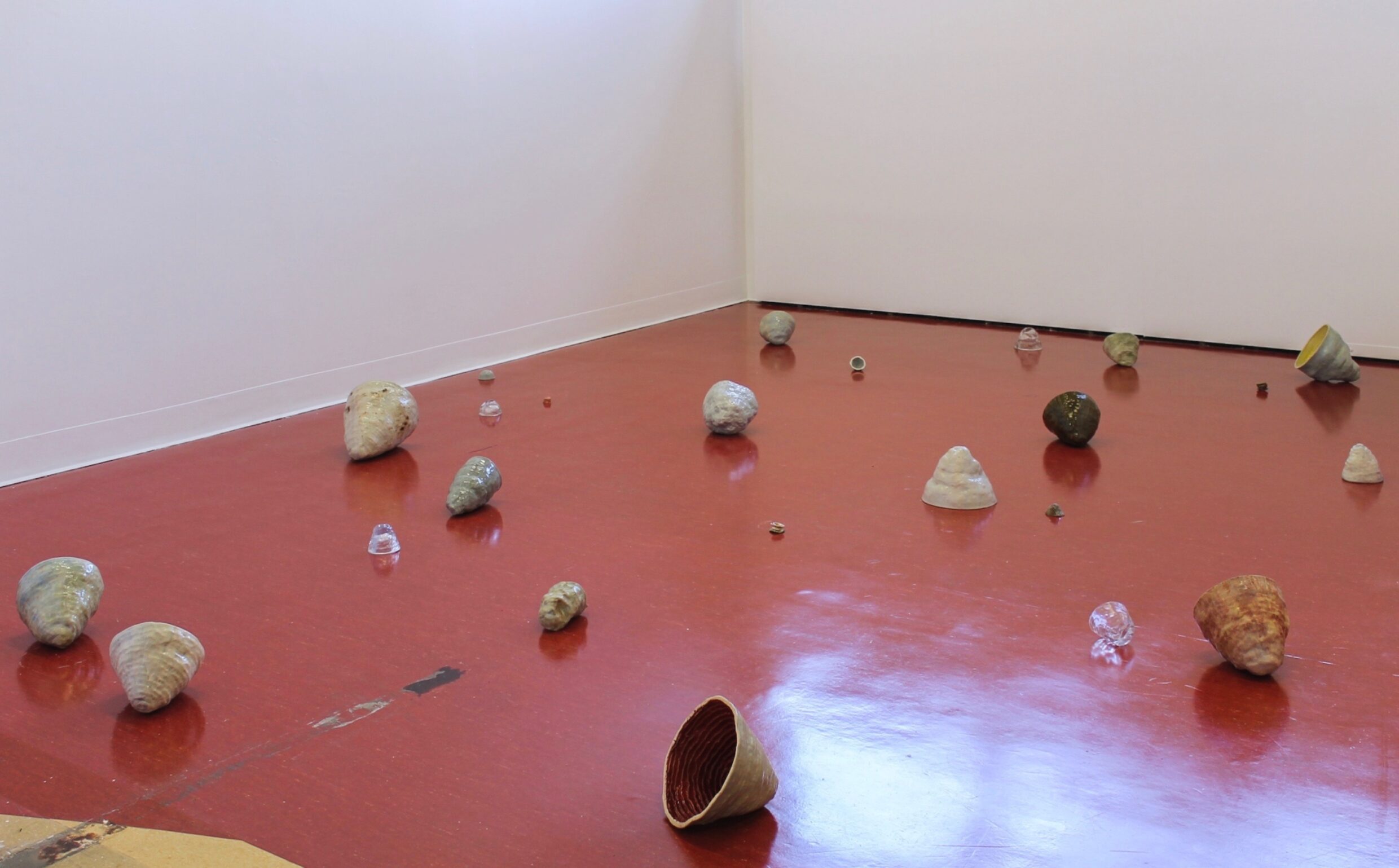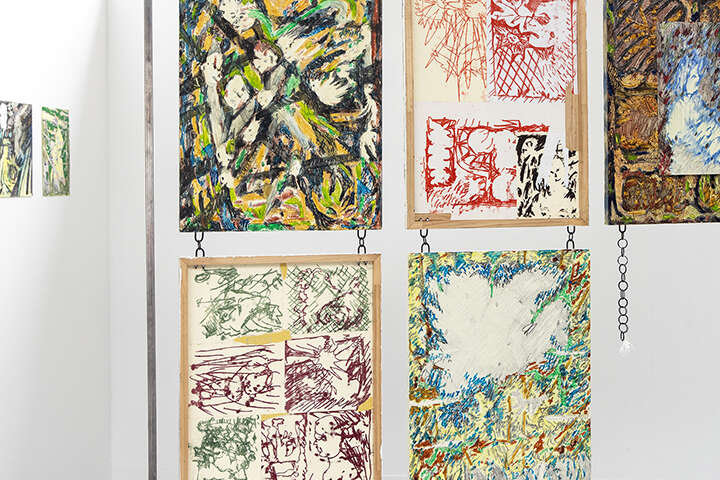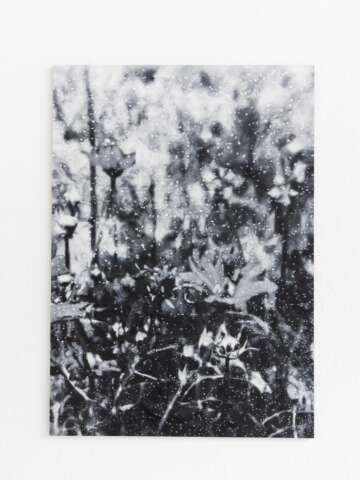Casey Carsel
It begins in a fall
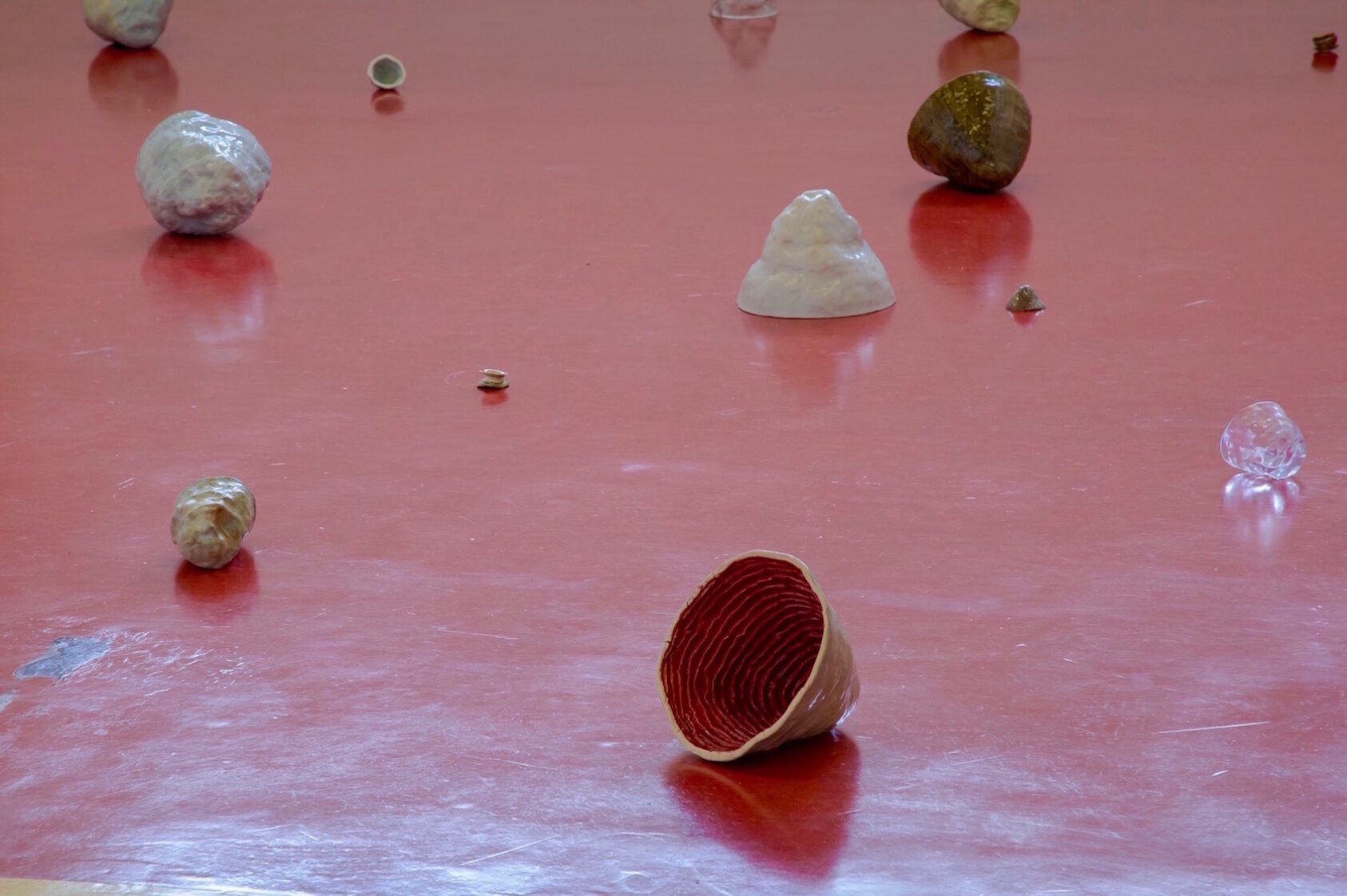
The creation of vessels with clay reflects the creation of things with language. In each object the potter makes, the potter’s hand is left behind in the residue of its decisions and actions upon the object’s surface. The traditional structures of pottery, the potter’s intention and experience, nature’s systems, and clay’s memories mix together to create a palimpsest of ambiguous subtleties. In clay and text, the effects of slippage and subjectivity are manifested in the maker’s actions on the object, and the writer’s intention on the word.
Both language and ceramics, as tools of creation, make tangible and stable what otherwise exists as free and fluid. Where the rough nuances of reality are burned away in words, the clay’s rough self is melted, hardened, and made permanent in ceramic. Old mistakes are left behind and new mistakes appear. To recreate a ceramic vessel in another material is to speak the same words in another language, to feel what changes and what stays the same. The way of language’s things is in negotiation, trading and finding what is gained and what remains lost.
Language functions to articulate and define. However, a word cannot fully encompass all facets of the thing to which it refers. The thing in language becomes abstracted and reduced. The articulation is a mis/representation of reality, rather than an accurate image. Certain aspects are trapped, and others remain inarticulable. A ceramic vessel carries the potential not only to release, but to withhold. The word, too, withholds. Just as it cannot encompass the whole of the thing to which it refers, it cannot encompass the whole of the communicator’s intentions. Words and worlds may slide from speaker to listener (or writer to reader) without any truth exchanged. And yet, one can but try.
